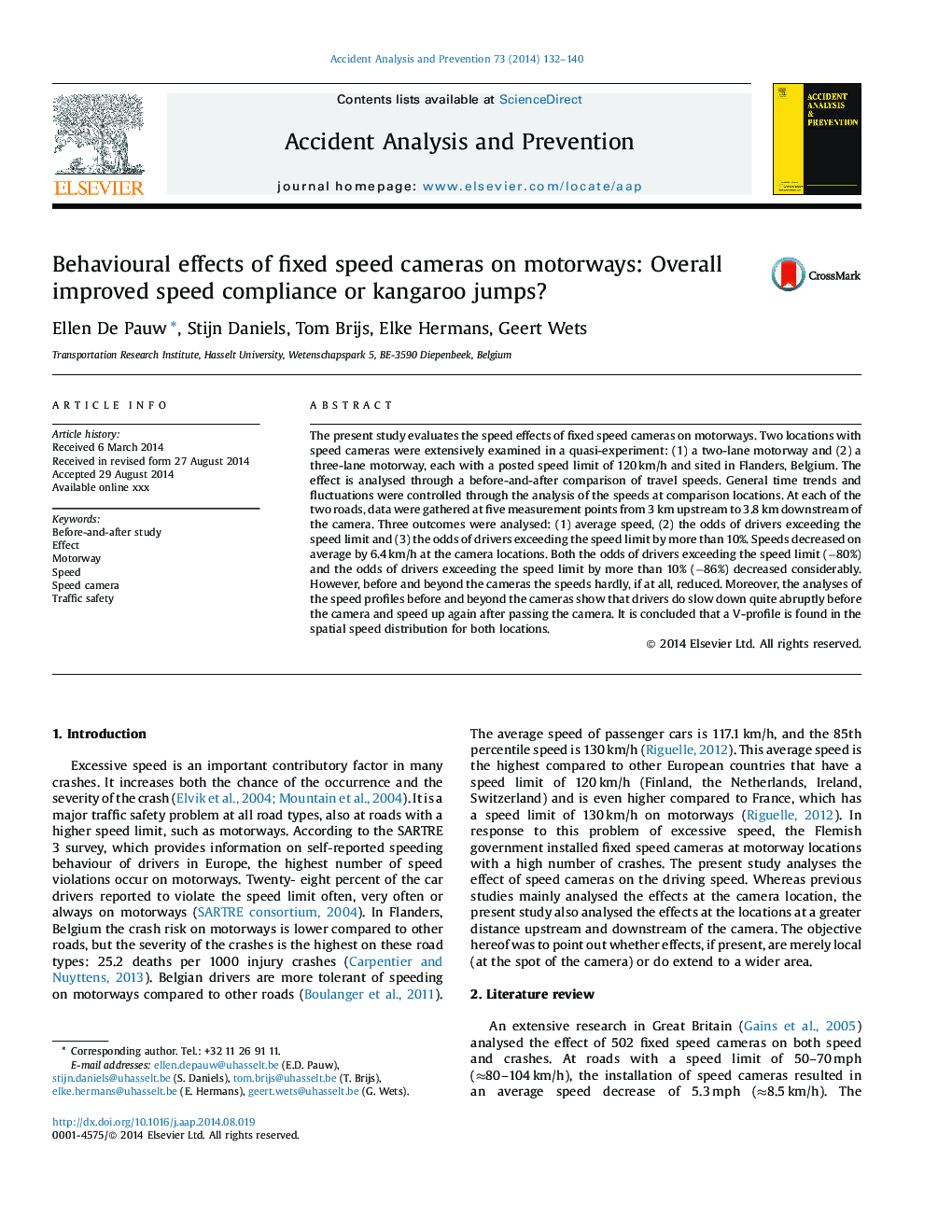| Article ID | Journal | Published Year | Pages | File Type |
|---|---|---|---|---|
| 6965871 | Accident Analysis & Prevention | 2014 | 9 Pages |
Abstract
The present study evaluates the speed effects of fixed speed cameras on motorways. Two locations with speed cameras were extensively examined in a quasi-experiment: (1) a two-lane motorway and (2) a three-lane motorway, each with a posted speed limit of 120Â km/h and sited in Flanders, Belgium. The effect is analysed through a before-and-after comparison of travel speeds. General time trends and fluctuations were controlled through the analysis of the speeds at comparison locations. At each of the two roads, data were gathered at five measurement points from 3Â km upstream to 3.8Â km downstream of the camera. Three outcomes were analysed: (1) average speed, (2) the odds of drivers exceeding the speed limit and (3) the odds of drivers exceeding the speed limit by more than 10%. Speeds decreased on average by 6.4Â km/h at the camera locations. Both the odds of drivers exceeding the speed limit (â80%) and the odds of drivers exceeding the speed limit by more than 10% (â86%) decreased considerably. However, before and beyond the cameras the speeds hardly, if at all, reduced. Moreover, the analyses of the speed profiles before and beyond the cameras show that drivers do slow down quite abruptly before the camera and speed up again after passing the camera. It is concluded that a V-profile is found in the spatial speed distribution for both locations.
Related Topics
Physical Sciences and Engineering
Chemical Engineering
Chemical Health and Safety
Authors
Ellen De Pauw, Stijn Daniels, Tom Brijs, Elke Hermans, Geert Wets,
